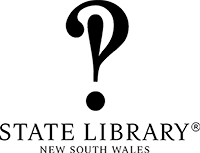FL14369494
Facsimile
Transcription
these charges after he had challenged Archdeacon Scott in the Supreme Court but he was further
criticised for having attended political meetings. In April 1826, he and his wife, Eliza, resigned
from the school because of the ''general ungentlemanly and uncharitable conduct'' of Archdeacon
Scott who was the official Visitor of colonial schools. It was said that Scott, who lived across the
river from the orphanage at Hambleton Cottage used to spy on the Walkers with his telescope.411
It must have been galling for Walker when Eliza's sister-in-law, Ann Hassall added her voice to the
criticism of him.
It also appears that Walker's stess at his treatment by his fellow clergy caused him to turn
to drink which caused the ''severe and continued affliction'' as he suffered the effects of heavy
drinking. His marriage to Eliza Hassall and with her help and the responsibility of his growing
family, Walker overcame his problem.412
William Walker's two brothers also came to Australia, John Walker in 1827 with his wife
Maria Dewhurst and a son, William. He became a merchant and missionary in Parramatta. Like
his brother, William Walker, he became involved in the difficulties of Jonathan Hassall who owed
him £800 in 1828. John Walker than moved to Bathurst and set up a carriage, wheelwright and
blacksmith's business. He later moved to Sydney in 1851 and then to Melbourne where he died in
1870.413 William Walker's other brother, James Walker, arrived in the colony in 1840. He became
a corn factor at Bathurst in 1843 and storekeeper at O'Connell Plains, between 1845 and 1859. He
married Mary Ann Harcourt who arrived in Sydney in 1840, at the Prince Street Wesleyan Church
in Sydney on 31 August 1842. She moved to Melbourne and died at Emerald Hill in 1872. James
Walker died on 4 March 1896 in Liverpool Asylum.414
William Walker was considered to be '' a clever man'' and Governor Brisbane declared him
to be the ''best educated man in the colony''. He decided to start a boarding school in Parramatta and advertised in the Sydney Gazette in 1827 for from six to ten boarders. An extension was built
on to his house, Minstrel, in George Steet and may have been the structure that was later to become
Harrisford House, part of the King's School. The school was flourishing in 1828 having nine
Griffith Girl's School and was run by William Griffith and his wife, who had been for the previous
six years renting Hassall House, across the street and which had been inherited by Reverend
Thomas Hassall.
Walker then turned his attention to farming on his 2000 acre grant, Brisbane Grove,
O'Connell Plains, which he obtained on 23 June 1823 as a marriage portion given to all the colonial
clergy, and in 1828 he ran 230 cattle and 2300 sheep there. With his wife's inheritance of 200 acres
of land called Coventry and a 40 acre farm at Bringelly called Dondell's as well as livestock he was
411 Kass, Terry et al., Parramatta, A Past Revealed, Parramatta City Council, 1996, p.103.
412 Brook, J. and Kohen, J.L., The Parramatta Native Institution and the Black Town, A History, p.186.
413 Procter, Peter, Second Thoughts: Walker, Hassall & Hebblewhite, Canberra, 1998, pp.35-37.
414 Ibid., p.38.
415 Ibid., p.191.
171
Notes and Questions
Nobody has written a note for this page yet
Please sign in to write a note for this page


